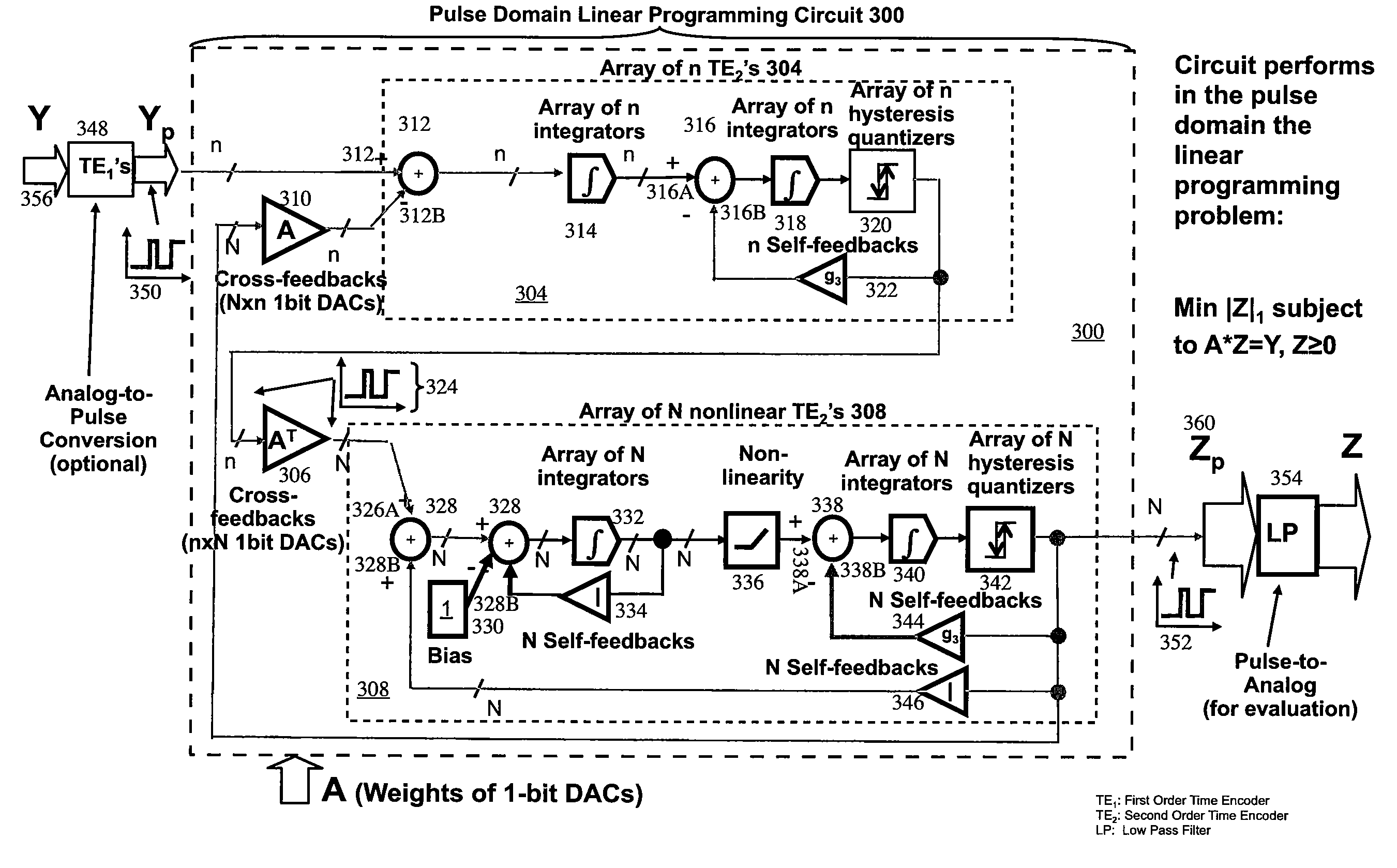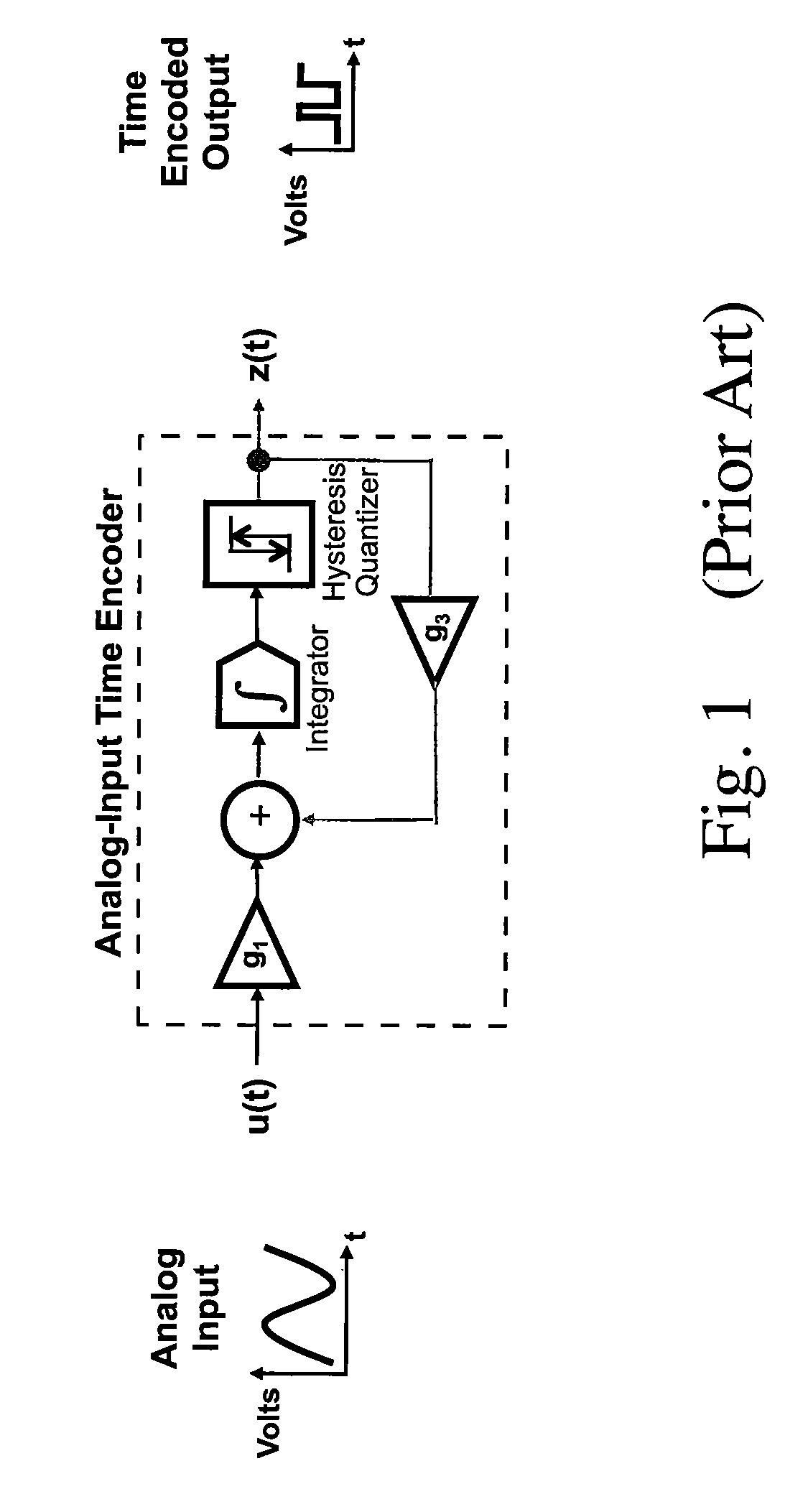Pulse domain linear programming circuit
a programming circuit and pulse domain technology, applied in the field of pulse domain linear programming circuits, can solve the problems of limited accuracy of such prior art circuits and limited accuracy of this circui
- Summary
- Abstract
- Description
- Claims
- Application Information
AI Technical Summary
Benefits of technology
Problems solved by technology
Method used
Image
Examples
Embodiment Construction
[0030]The present disclosure relates a system and method for making a pulse domain linear programming circuit. Specifically, the pulse domain linear programming circuit can be used for a real-time recovery of signals captured via compressed sensing, in which a linear programming optimization problem is solved in a pulse domain.
[0031]FIG. 3 shows a block diagram of a pulse domain linear programming circuit 300 of the present disclosure, suitable for solving the linear programming problem of Equation 1 in the pulse domain. The pulse domain linear programming circuit 300 does not need analog variable-gain amplifiers used in the prior art (FIG. 2). The pulse domain linear programming circuit 300, for example, solves in the pulse domain the following linear programming problem:
Min|Z|1 subject to A*Z=Y,Z0.
[0032]That is, minimize |Z|1 subject to the above constraint. |Z|1 is the norm-1 of the vector Z. |Z|1 is defined as:
|Z|1=Zi, the summation range being i=1 to N.
[0033]As a person having...
PUM
 Login to View More
Login to View More Abstract
Description
Claims
Application Information
 Login to View More
Login to View More - R&D
- Intellectual Property
- Life Sciences
- Materials
- Tech Scout
- Unparalleled Data Quality
- Higher Quality Content
- 60% Fewer Hallucinations
Browse by: Latest US Patents, China's latest patents, Technical Efficacy Thesaurus, Application Domain, Technology Topic, Popular Technical Reports.
© 2025 PatSnap. All rights reserved.Legal|Privacy policy|Modern Slavery Act Transparency Statement|Sitemap|About US| Contact US: help@patsnap.com



